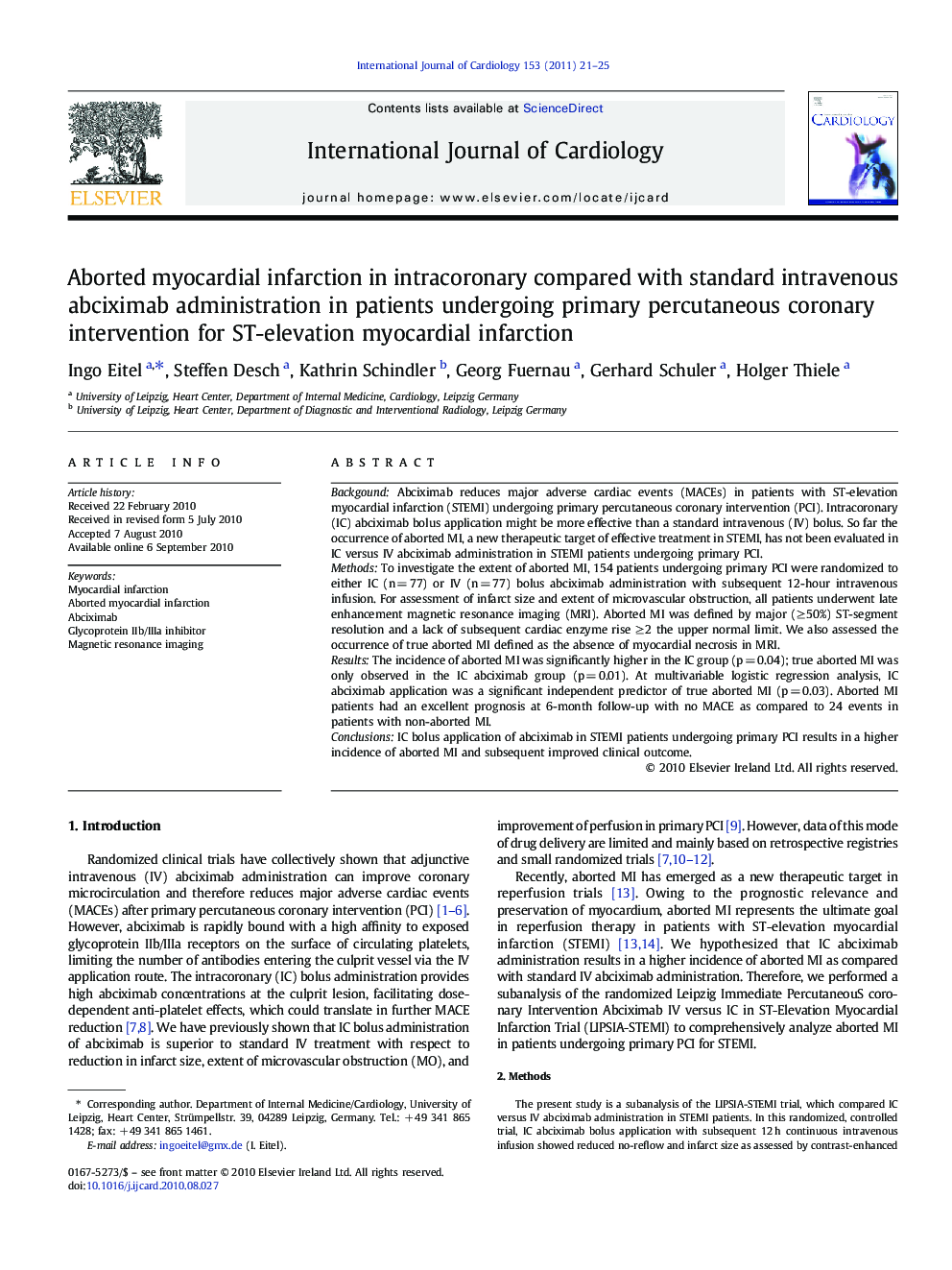| Article ID | Journal | Published Year | Pages | File Type |
|---|---|---|---|---|
| 2930311 | International Journal of Cardiology | 2011 | 5 Pages |
BackgoundAbciximab reduces major adverse cardiac events (MACEs) in patients with ST-elevation myocardial infarction (STEMI) undergoing primary percutaneous coronary intervention (PCI). Intracoronary (IC) abciximab bolus application might be more effective than a standard intravenous (IV) bolus. So far the occurrence of aborted MI, a new therapeutic target of effective treatment in STEMI, has not been evaluated in IC versus IV abciximab administration in STEMI patients undergoing primary PCI.MethodsTo investigate the extent of aborted MI, 154 patients undergoing primary PCI were randomized to either IC (n = 77) or IV (n = 77) bolus abciximab administration with subsequent 12-hour intravenous infusion. For assessment of infarct size and extent of microvascular obstruction, all patients underwent late enhancement magnetic resonance imaging (MRI). Aborted MI was defined by major (≥ 50%) ST-segment resolution and a lack of subsequent cardiac enzyme rise ≥ 2 the upper normal limit. We also assessed the occurrence of true aborted MI defined as the absence of myocardial necrosis in MRI.ResultsThe incidence of aborted MI was significantly higher in the IC group (p = 0.04); true aborted MI was only observed in the IC abciximab group (p = 0.01). At multivariable logistic regression analysis, IC abciximab application was a significant independent predictor of true aborted MI (p = 0.03). Aborted MI patients had an excellent prognosis at 6-month follow-up with no MACE as compared to 24 events in patients with non-aborted MI.ConclusionsIC bolus application of abciximab in STEMI patients undergoing primary PCI results in a higher incidence of aborted MI and subsequent improved clinical outcome.
